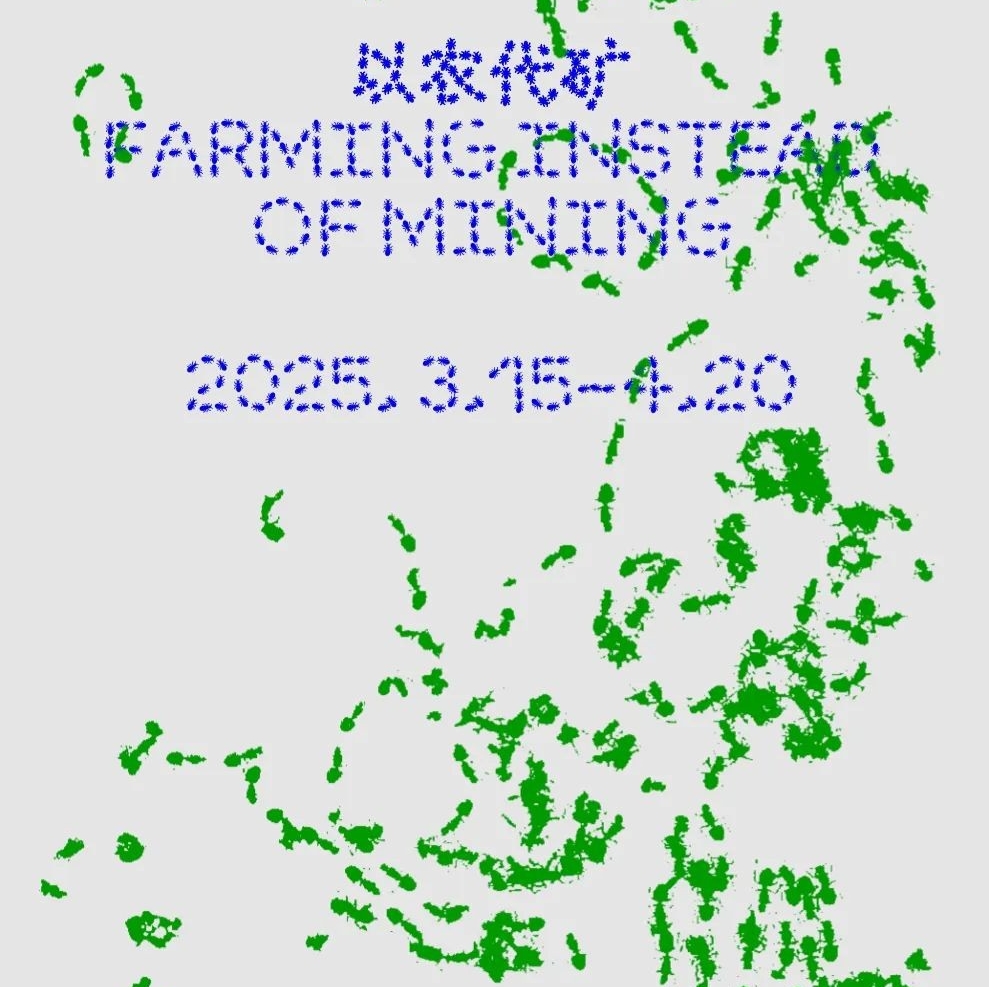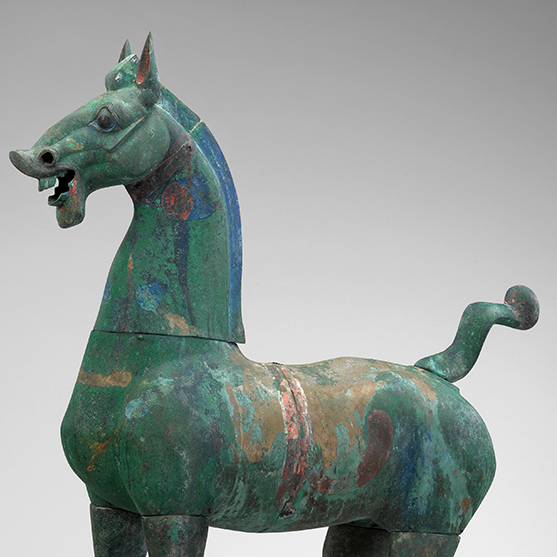
The "Eco-Vision Plan-Sheng" exhibition starts from the Chinese character "生, sheng", whose original meaning in the oracle bone script is the sprouting of grass and trees, and which can been to connect the different scenes of life, ecology, living and production. The exhibition is composed of four sections, each with an ancient Chinese characters bearing the symbol: "產 Chan", "眚 Sheng" and "甡 Shen" and “甠Qing”, and revolves around keyworkds such as Life Design, Hyperobjects, Synthetic Biomaterials, Posthuman, Third Nature, Ecological Capital, Responsive Environment, Climate Design, Resilience, etc. It involves 28 artists and designers from 15 countries and regions, including Harvard University, Massachusetts Institute of Technology, and the Netherlands Museum of Architecture and Design, with 32 pieces of art and design projects of 45 species, in an attempt to explore the changes of "living", "habitat", "ecology" and "survival" through a brandnew perspective, so as to explore the visionary new opportunities behind the ecological crisis from the ecological context and cultural background of China, and to call for an international ecological dialogue across cultures, time and space, and fields.
Academic Landscape

From a global geographical perspective, the species studied in the artworks featured in this exhibition are mainly distributed in the coastal regions of Europe, America, Asia, Australia, and Africa. From plants such as "French Cyanobacteria" and "Amazon Rainforest" to species like "African Elephants" and "Yellow Croaker from Fujian Coast"; from organisms like "Squirrels", "Dutch Agricultural Plants", "Chilean Soapbark Trees" and "Endangered Frozen Embryos of Local Species at Brooklyn Navy Yard in New York" to inorganic entities like "Rocks", "Plant Ash", and "Mining Sites"; from cellular scales such as "Viruses", "Air", and "Fungi in the Aukstumala Moorland Swamp in Lithuania" to metaversal scales like "Future Humans", even "Semi-living Steaks" created using tissue engineering technology are included in the exhibition. The diversity of participating species determines the exhibition's characteristics, such as "Hyperobjects", "Posthuman", and "The Third Nature".
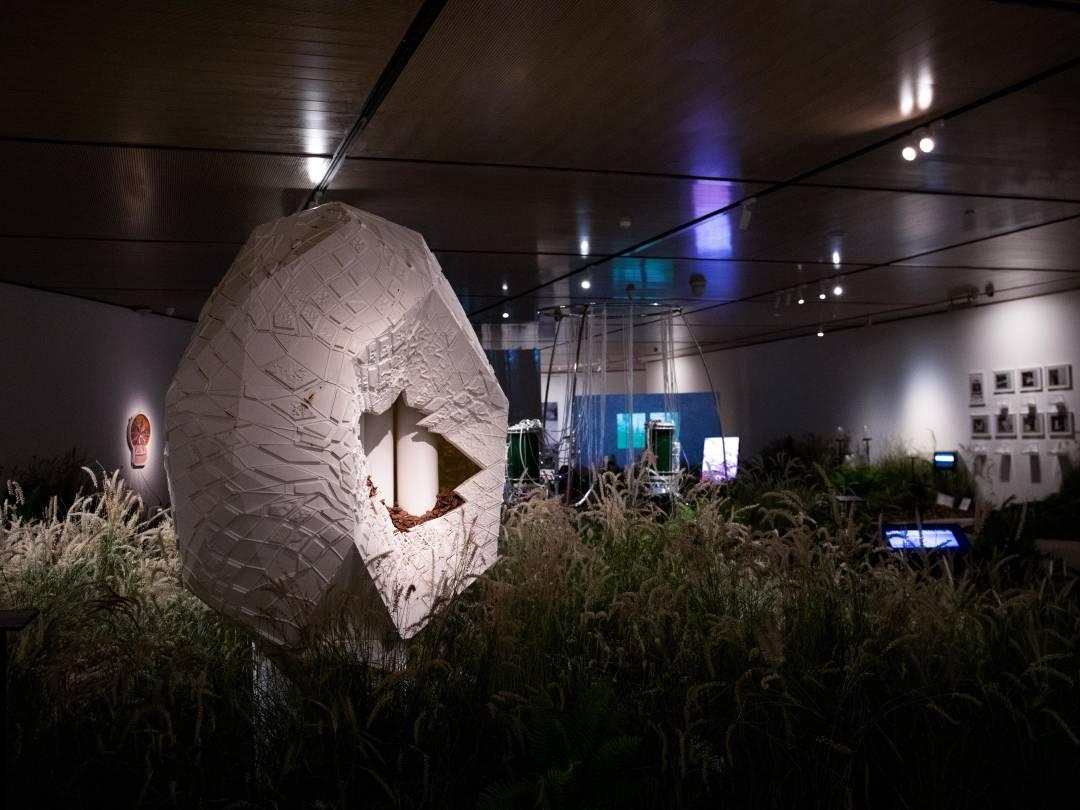




Exhibition Venue
Section Introduction





All exhibited works in the first section.
"Chan", meaning birth. Since the beginning of the 21st century, the term "Anthropocene" has often been informally used to describe the current geological epoch of Earth, becoming a record of the impact of human activities on the natural climate and ecosystems. Economic production, like a "factorial", accelerates rapidly, with development, expansion, production, and manufacturing behaviors continuously replicated. As a result, the "natural individuality" and "ecological existence" are moving towards extinction in a somewhat overlooked manner. The works in this section all focus on the history of Earth's and human environment changes in their own way.
Featured Artists
TerreformONE

Non-profit architecture and urban design research group Dedicated to transforming the Earth through groundbreaking architectural biotechnology

Terreform ONE
TerreformONE has built an egg-shaped anti-extinction library, which houses frozen embryos of local endangered species. The cryogenic vault is contained within a symbolic "egg" that gradually deconstructs over time. Each species entering the library carries a genetic marker, which contains a "Natural Rights Bill" modified according to United Nations human rights documents, and the encoded marker represents the position of "species equality". The project aims to reverse ecological issues by creating a space to protect these organisms in their earliest and most basic states.
Formafantasma

Research-based design studio
Trimarchi and Farresin serve as Heads of the Geodesign program at Eindhoven Design Academy

“Cambio”,Formafantasma
The name of the work "Cambio" comes from the medieval Latin word Cambium, meaning "change, exchange". Commissioned by the Serpentine Gallery in London and investigated by Formafantasma, it is a long-term investigative project on the extraction, production, and distribution of wood products, raising questions about wood production and its ethical issues. The evolution of commercial forms and their global expansion make it extremely challenging to regulate timber. The forestry it focuses on originated from biological exploitation in colonies in the 19th century, which, in terms of revenue generated and impact on the Earth's biosphere, has become one of the largest industries in the world. The project highlights important parameters in sustainable development by researching forestry and logging. Creating a sustainable project requires extensive research on the production process and planning for the entire life of the product.
Accurat

Accurat data visualization design studio
The studio is dedicated to researching the beauty behind data complexity
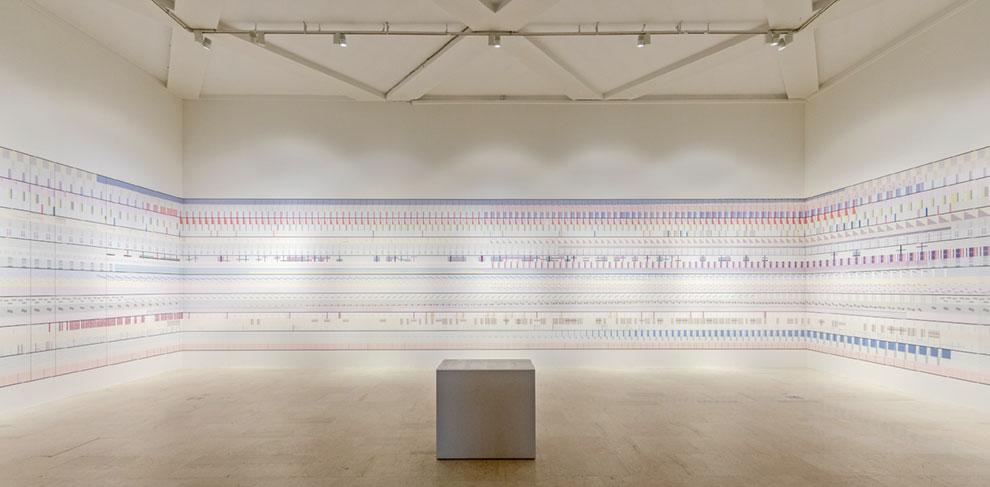
“The Room of Change ”,Accurat
"The Room of Change" data art installation presents a handcrafted data tapestry, illustrating how various aspects of our environment have changed over the past few centuries, how they are still changing, and how they will continue to change. The installation combines several different data sources, describing the world from global, local, and individual perspectives, telling the stories of people and their evolving relationships with the things around them over time. It provides dense and refined information in layers, emphasizing the universality of "change" on all scales.







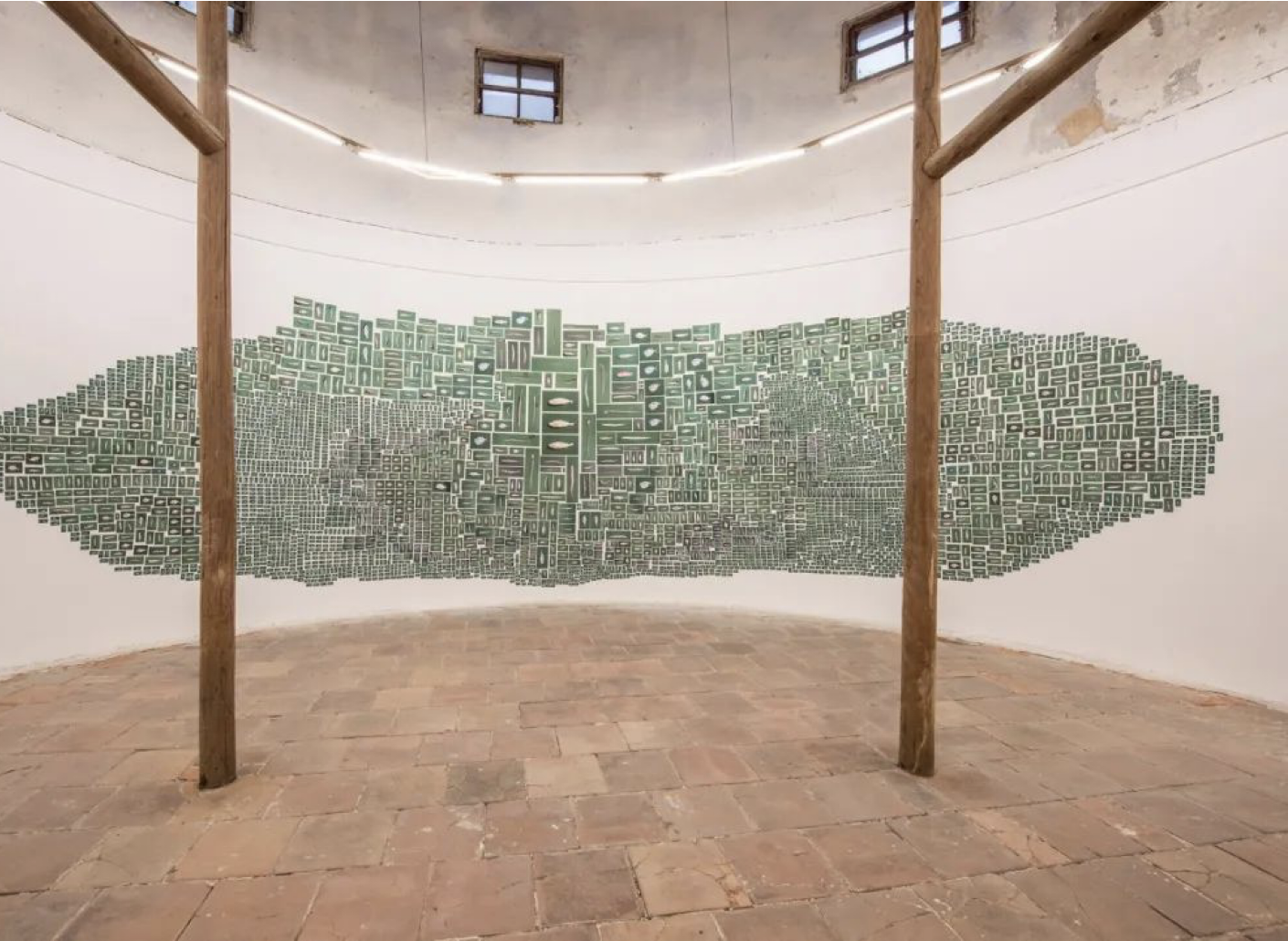
All exhibited works in the second section.
"Sheng" is not only the living of human beings, but also the flourishing of the community of life. The exhibition takes species as its protagonists, covering cyanobacteria in France, croaker fish in coastal Fujian, fungi in Lithua nian swamps, soap bark trees in Chile, dust in the Sahara, and dead wood in Nordic forests. The projects range from sustainable products to digital immersive experience, from discursive scenarios to practical tools, from urban infrastructure to virtual games, from new biological materials to ancient living structures, etc, with distinct diversity, creativity and transcendence. The exhibition is linked by three threads. First of all, the four ancient Chinese characters extended from "Sheng" are used as the outline of the exhibition, placing ecological projects in a specific and distinct historical perspective, thus the exhibits are interpreted, deconstructed and reshaped in different ways. At the same time, the exhibition is based on the key directions of China's development since the 14th Five-Year Plan, with the three key words "ecological governance, energy transformation and new agriculture”. The third thread is a collaboration with Zoöp, a research project of the Het New Institute in the Netherlands, to build a cooperative institution with non-human beings.
Featured artists
Maya Kramer

Assistant Professor at NYU Shanghai Art School

There is Nothing you can Measure Anymore, Maya Kramer
The work is a tiger skull cast from laundry detergent, floating like a 3D X-ray in a one-way mirror glass cabinet, with water slowly dripping on the skull, gradually disintegrating. Both symbolically and materially, this piece implies environmental deterioration – the tiger is a powerful animal pushed to the brink of extinction by human overactivity. Phosphorus is a common pollutant found in laundry detergent, and X-rays can identify and diagnose potential problems. The skull's disintegration also indicates that entropy and dissolution are irreversible processes.
Ken Rinaldo

Focused on cross-species communication Creative fields include interactive bioart, robotics, and 3D animation
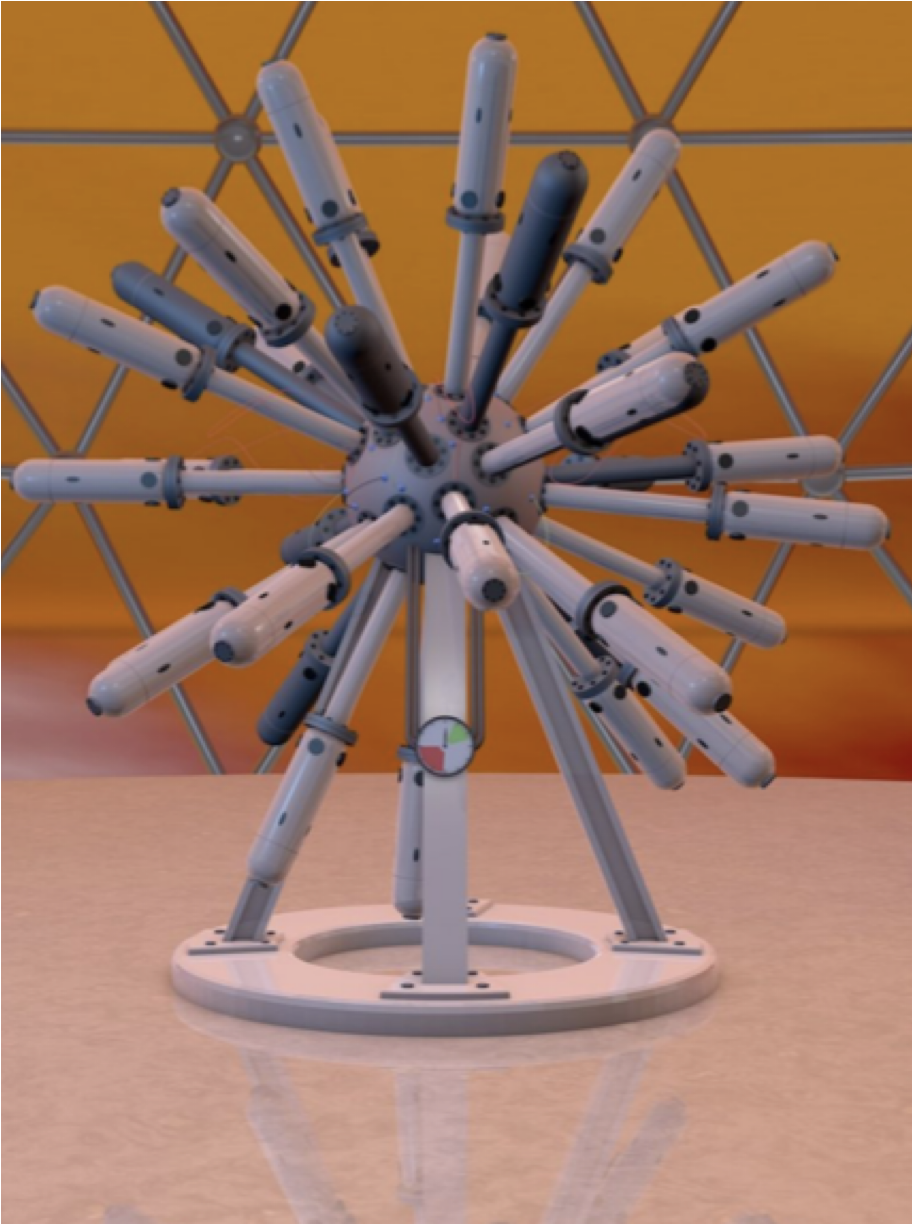
Maximum Frustration Compressor, Ken Rinaldo
"Maximum Frustration Compressor" is a real-time clock for the Global Warming Index (GWI) connected to a Trompe-L'œil 3D printed device of an experimental cold fusion reactor. The image features a clock dial connected to a stepper motor, which rotates irregularly as the Global Warming Index rises, symbolizing the unstable weather Earth is experiencing. If the dial on this 3D print stops its irregular rotation, it indicates that global warming is not intensifying. The word "Frustration" in the title refers to the fact that solar, wind, geothermal, and wave energy have already provided real solutions for many of our energy needs, yet we continue to dream of supreme energy freedom, adopting carbon extraction policies such as fracking, coal mining, and oil refining, and continue to pollute our environment, with the clock's hand constantly rotating.
Chow & Lin

Chow & Lin is an artist duo
Using statistics, mathematics, and computational techniques to address global issues

Equivalence - The Ecological Footprint of Fish, Chow and Lin (Images are slidable)
In this project, they work closely with scientists, fishery experts, fish farms, and local fishermen. Through research on fish growth cycles and breeding methods, they calculate that it takes 7.15 kg of trash fish to grow one kilogram of yellow croaker from fry to market size. The key image of the work is a mosaic portrait of a school of fish - three peculiar fish are placed at the center, surrounded by 4,136 small fish. The mosaic art structure is chosen to frame the complexity of the theme, as well as to satirically emphasize human's innate desire for order and balance.







All exhibited works in the third section.
"Shen (甡)", the appearance of coexistence among all beings. Human systems, non-human entities, semi-living entities, synthetic organisms... all share a fixed amount of matter in the same spacetime, constantly generating "intersections" like countless sets. In collisions with natural forces and human imagination about the future, humans begin to strongly desire a return to a harmonious state of "unity between man and nature," thereby rebalancing the flexible coexistence model and integrated symbiosis between material development and natural evolution, from which to overlook the growth, perception, and alternation of nature. Artists attempt to unfold the future imagination of living machines or intelligent organisms in overlapping contexts, and the shift of their creative objects from "human-centered" and "humanistic" to "life-centered" may also be a microcosm of exploring the Earth's shared destiny.
Some participating artists
Michael Sedbon

Masters of Interaction Design from London College of Arts School of Media

“CMD 2.0”,Michael Sedbon
"CMD 2.0" is an artificial ecological system composed of three bioreactors sharing a single light source. Thanks to the credits they receive for producing oxygen, each colony of photosynthetic bacteria can request access to light. As resource usage rights are granted, artificial intelligence tests different financial system populations on these cyanobacteria colonies, and photosynthetic cells and computers experiment with different political systems. The rules governing the market are optimized through genetic algorithms: genetic algorithms depict these primal social rules as genes, cultivating the population of societies, and ultimately giving rise to a new generation of markets.
Gediminas Urbonas

Artist, educator Co-founder of Urbonas Studio
Former Director of the Art, Culture, and Technology Program at the Massachusetts Institute of Technology

Swamp Game, Gediminas Urbonas
This exploratory game invites viewers to experience empathetic relationships unfolding in a sentient swamp—a perfect environment for sensing the fragile interdependencies between organisms and their habitats. Here, every member of the community is part of the environment of other members and is essential for the overall survival. The game explores shifts in perspective, allowing us to embody different species by floating among swamp organisms: plants, insects, birds, amphibians, fungi, bacteria, or algae, and discovering the main metaphysical rule of the swamp: to become another, you must be eaten.
Oron Catts
Ionat Zurr

Co-founder of the Tissue,
Culture & Art "TC&A" Project

The Remains of Disembodied Cuisine, Oron Catts & Lonat Zurr
In this performance, humans taste, for the first time, meat grown in a laboratory rather than cut from an animal's body—eating a semi-living steak produced by tissue engineering technology. The project critiques the vision of a "victimless utopia" in which we could eat meat without slaughtering animals. On a moral level, the project addresses the most common interaction zone between humans and the biological world and explores the apparent discomfort people feel when someone "messes" with their food. While offering the illusion of "victimless" meat consumption, the project also potentially suggests a utopian future in which the killing and suffering of animals for food consumption would be reduced—perhaps, consequently, resolving ecological and economic issues related to the food industry. However, if we turn our food into a new object or category of existence, the "semi-living," it is equally possible that, within the logic chain of this action, the semi-living could be forced to become new subjects of exploitation.

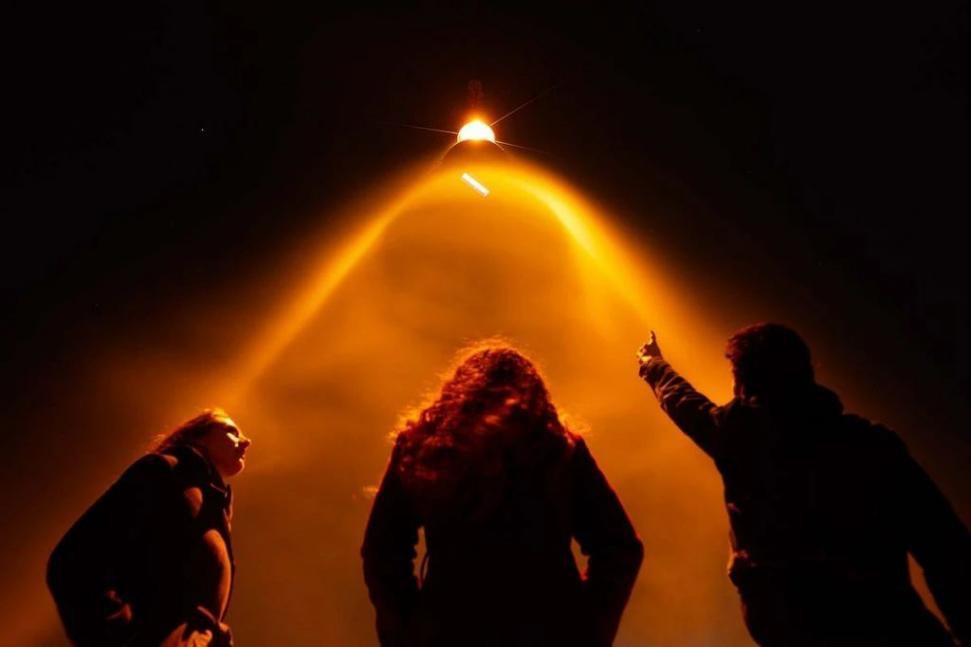

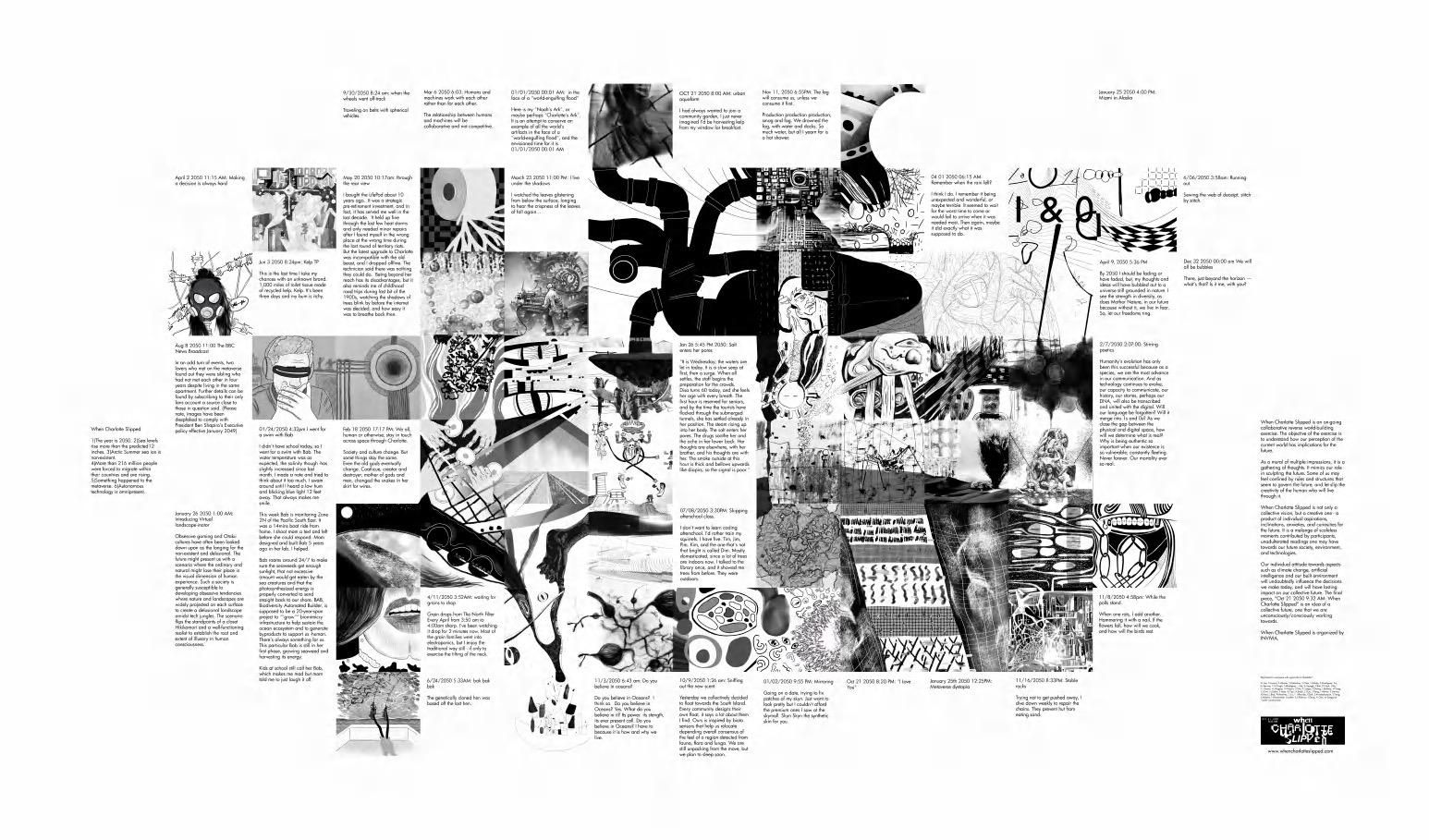



All exhibited works in the fourth section.
In the fourth section of the exhibition, "Qing," meaning "clear sky after rain," artists explore the coexistence of new ecological risks and new life opportunities. "Harmonious competition" and "adaptation enhancement" encourage humans to actively seek future ways of living and evolving, embracing a natural disposition to return to simplicity, face the changing evolution of all beings, respect the organic laws of all things, and cherish the value of life's succession. In this section, artists hope to consider how design and art can help us survive better on Earth and even in outer space in the future, proposing flexible, speculative problem-solving measures to support the sustainability and sustainable development of humans and Earth citizens. They attempt to find an opportunity for coexistence, integration, and interdependence in the post-human, post-life, post-ecological, and post-economic era.
Featured artists
Gilberto Esparza

Member of the National Art Creators System.
His practice employs consumer recycling technology and biotechnology experiments.

Autophotosynthetic Plants, Gilberto Esparza
This project takes the form of active organisms, composed of a modular set of microbial cells that cultivate bacterial colonies from different parts of Lima's water system. These bacteria generate electricity through metabolism and improve water quality. The modules interconnect, forming a hydraulic network that manages biofiltered water to a central container, creating an optimal environment for producer species and consumer species (protozoa, crustaceans, microalgae, and aquatic plants) from different trophic levels to reach a steady-state balance. The electricity produced by the bacteria can be converted into light energy to assist plants in photosynthesis, allowing the plants in the central container to complete their metabolic processes.
Liam Young

Designer, director, and BAFTA-nominated producer
Works in design, fiction, and future spaces

Planet City, Liam Young
"Planet City" is a film and a book set in an imaginary city designed to house 10 billion people. In this scenario, we leave the rest of the world to become a global wilderness, and return stolen land. The film follows a continuous parade that loops and dances through the city. Each day, it intersects with different carnivals, cultures, and celebrations, walking and changing pace, in an endless cycle of new colors, costumes, and noises. In "Planet City," we see climate change no longer understood as a technical problem but as an ideological one, rooted in culture and politics. This urban fiction serves as a remarkable imagination of tomorrow, offering a fresh look at the environmental issues we face today.
Joaquin Fargas

Director of the San Isidro Exploratorium of Art, Science, and Technology in Argentina
Director of the Latin American BioArt Lab at Universidad Abierta Interamericana (UAI)

The Biosphere Project, Joaquin Fargas
"The Biosphere Project" consists of natural ecosystems isolated in sealed containers, which are only allowed to be influenced by external heat and light, relying on light as an energy source to promote the development and persistence of the life cycles occurring within them. These systems represent our planet on a very small scale, demonstrating its vulnerability and the importance and urgency of paying attention to it. The spheres are made of materials like glass and acrylic, placed on supports of varying heights made from stainless steel, iron, or aluminum, or simply hung from the ceiling, serving as a metaphor for Earth, displayed and observed on an infinitesimally small scale.
Literature Section

In the ecological design literature section "The Flourishing of All Things," the historical development of ecological design from 1960 to 2022 is reorganized and visually presented, while partnering with 「Juanzong Books」, to showcase books and materials that have had a significant impact on the development of ecological design. Here, life consciousness from the past and the future, local and foreign, will engage in a cross-temporal dialogue and exchange.

Participating artists
Gilberto Esparza
Joaquin Fargas
Yizhuo Guo
Lydia Kallipoliti
Maya Kramer
Li Yang
Guiyu Liu
Mary Mattingly
Ken Rinaldo
Daan Roosegaarde
Michael Sedbon
Marin Sawa
Allen Sayegh
Adelaide Lala Tam
Orkan Telhan
Gediminas Urbonas
Richard Weller
Pinar Yoldas
Oron Catts & Ionat Zurr
Chow & Lin
Accurat
Design Earth
Dust Blue
Food Geography Group
Formafantasma
NEDO Studio
TerreformONE
WHOM Digital Art Team
Zoop
Co-Space
Juanzong Books
(Sorted by last name in alphabetical order)

The Eco-Vision Plan is an international research, design, and activity network that explores the tripartite relationship between people, nature, and technology through interdisciplinary collisions, providing proposals and solutions for life, Earth, and alternative futures in response to climate change and environmental crises. The Eco-Vision Plan regularly invites industry leaders such as designers, artists, scientists, entrepreneurs, educators, decision-makers, and non-profit organizations to serve as catalysts through interviews, lectures, exhibitions, and projects, providing comprehensive media, tools, and solutions for the age of crisis.
Organizing Committee
Director: Gao Hong, Fan Di'an
Members: Yang Wenhai, Xu Yang, Lin Mao, Wang Xiaolin, Lv Pinjing, Qiu Zhijie, Pan Chenghui
Academic Director: Fan Di'an
Chief Planner: Song Xiewei
Exhibition Director: Zhang Zikang
Curator: Jing Siyang (Autumn)
Administration Coordination: Dong Huanqin, Che Jing, Wen Meng, Zheng Tao
Exhibition Coordination: Ni Erlu
Exhibition Coordination Assistants: Wu Jingxi, Li Chaoqun, Deng Jiawei
Exhibition Design: Shen Xingyi, Zhao Nan, Zhao Hengyue, Liu Qi, Gong Yi
Curatorial Team: Wang Qi, Tan Songye, Yu Tianyi, Chang Zhen, Wang Xiaotong, Gao Xintian, Wang Guodong, Li Xinxiang, Wang Lu, Li Chenxue, Fan Shuyi, Zhu Yimeng, Li Runze, Wu Jiaqi, Wang Nan, Yu Dian'er, Hu Hanyu, Huang Wanting, Yin Chengxiu, Li Zelin, Luo Woqing, Guo Yimin
Host: Central Academy of Fine Arts (CAFA)
Guiding Units:
The 8th Design Discipline Review Group of the Academic Degrees Committee of the State Council
National Steering Committee for Graduate Education in Art
Specialties Higher Education Institutions Design Teaching Steering Committee of the Ministry of Education
Organizers:
CAFA School of Design
CAFA Art Museum
CAFA Academic Affairs Office
CAFA Graduate School
NetDragon Websoft Holdings Limited
Lianyungang Optoelectronics Co., Ltd.
CUBE Art Museum
Co-organizers:
iFlytek Co., Ltd.
UED Week
Courtesy CAFA School of Design.


